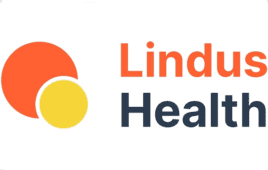
Image courtesy of Pixabay
Pharmaceutical and life sciences companies are faced with a constant stream of new data flowing into often siloed information systems. About 80% of that information exists in unstructured text that is difficult to extract and use, despite its paramount importance in driving clinical and commercial outcomes.
As a result, these organizations find themselves increasingly overwhelmed with volumes of inaccessible data. At the same time, researchers and data scientists lack effective search tools to find the right information in this “big data” tsunami, causing them to miss opportunities to enhance patient safety, improve clinical trial design, identify previously undetected biomarkers and better understand the voice of the customer.
To overcome the limitations of time-consuming, manual searches through mountains of data, pharma and life sciences companies are looking to artificial-intelligence-powered tools such as natural language processing (NLP). These technologies have grown increasingly effective and user-friendly. Importantly, technology such as NLP is today enabling organizations to embrace enterprise-wide solutions that reduce previous, disjointed “department-to-department” approaches to generating insights and evidence. The core value of enterprise-wide NLP technology is that it mobilizes textual data at scale, enabling it to handle the volume, velocity and variety seen in enterprise-wide data.
Too much data, too few resources
Healthcare and life sciences organizations have seen an explosive healthcare data growth rate of 878% since 2015, according to Dell EMC. This surging amount of health data, coupled with its complexity, has created a situation in which it is nearly impossible for humans to analyze data without leveraging technology properly. Essentially, drug development today requires pharma and life sciences companies to process, sort and share data at a speed and volume that exceeds the industry’s human capacity.
Pharmaceutical and life sciences companies have multiple sources of useful drug and safety data at their disposal, including electronic health records, medical literature, patent filings and social media, to cite just a few. To help manage this avalanche of data, many of these companies are leveraging NLP to mine unstructured text-based documents and then convert that data into structured information that can be effectively analyzed and used in decision making or for predictive modeling.
Text mining is the process of examining extensive collections of documents to discover new information or help answer specific research questions. NLP automates text mining, allowing machines to “read” text by simulating the human ability to understand a natural language, enabling the analysis of unlimited amounts of text-based data without fatigue in a consistent, unbiased manner.
As scientific and clinical data continues to proliferate, NLP is revolutionizing how pharmaceutical and life sciences companies scour that data for insights that benefit drug development across the enterprise.
Pharma use case: NLP for enterprise-wide value
NLP offers a wide variety of use cases to uncover data for pharmaceutical and life sciences companies, including generating new information for novel drug target intelligence, biomarker discovery, safety case processing, clinical trial analytics, medical affairs insights and clinical documentation improvement. Many pharma organizations have implemented NLP workflows to gain value in a suite of applications across the enterprise. Examples of use cases from one top 10 pharma include:
- In discovery, accessing literature sources for landscapes of gene-disease associations reduces manual curation and presents clusters of potential diseases for any chosen gene to enable indication targeting.
- Also, in discovery, developing an integrated systems pharmacology approach allows reliable prediction of potential ‘on-target’ and ‘off-target’ Adverse Drug Reactions (ADRs) for new drugs in development.
- In safety, using NLP to enhance the searchability of internal preclinical toxicology safety reports.
- In development, many applications in clinical trial analytics, for trial design, meta-analysis, and clinical competitive intelligence.
- In the real world, extracting epidemiology metrics and models from the literature.
- In medical affairs, capturing internal and external intelligence streams around product brands into one integrated environment for visual analytics that aid brand team decisions.
- Also, in the post-market, looking across scientific literature and prescription databases to enable a better understanding of drug-drug interactions and co-prescription trends.
As evidenced by this broad range of applications, the implementation of NLP brings enterprise-wide value from bench to bedside.
Sparking future innovation
The challenge of generating insights from ever-increasing volumes and complexity of data is likely to grow more acute as the pharma, life sciences and healthcare industries continue to embrace digital technologies across their value chains, creating massive amounts of data each year. Consequently, NLP will play an enduring key role in enabling researchers and data scientists to extract critical data at scale to surface novel intelligence that sparks drug-development innovation.

Jane Reed
Jane Reed is director, life sciences at Linguamatics, an IQVIA company. She is responsible for developing the strategic vision for Linguamatics’ product portfolio and business development for the pharma and biotech market. Jane has extensive experience in life sciences informatics. She has worked for more than 20 years in vendor companies supplying data products, data integration and analysis and consultancy to pharma and biotech — with roles at Instem, BioWisdom, Incyte and Hexagen. Before moving into the life science industry, Jane worked in academia with post-doctoral positions in genetics and genomics research
Filed Under: Industry 4.0





Tell Us What You Think!
You must be logged in to post a comment.